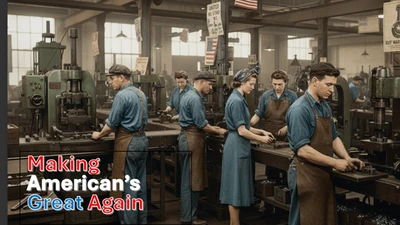As a diversified investor, I see restaurant investing as a blend of opportunity and responsibility, aligning with my values of stability, free-market principles, and long-term stewardship. With the U.S. restaurant industry projected to reach $1.2 trillion by 2026, it’s a tempting venture, but I’d approach it like selecting a dependable family recipe—something nourishing and rooted in tradition rather than a fleeting trend.
Why Restaurants? A Steady Table in a Wobbly Market
Restaurants offer a tangible business model, deeply tied to community and heritage, which speaks to my conservative leanings. The industry bounced back from the 2020-2021 pandemic, with 2024 sales hitting $1.1 trillion, proving its resilience as a recession-resistant sector. People keep dining out, especially at local spots that reflect cultural values—think neighborhood diners or hometown grills. This fits my support for free enterprise over government interference. Plus, investing a small amount in a local restaurant lets me back my community directly, fostering growth where I live. Still, with slim margins—around 3-5% for full-service spots—and rising labor costs (up 5.2% in 2025), I’d focus on proven operations.
Investment Options: Picking the Right Dish
- Public Restaurant Stocks—Safe Bets with Flavor
I’d start with established names like Darden Restaurants (DRI), running Olive Garden and LongHorn Steakhouse, with a $19.8 billion market cap and a solid 3.2% dividend yield as of this month. Its stock at $165.34 carries a 6% upside, offering the reliability of a classic comfort food chain. McDonald’s (MCD), at $296.78 with a 2.4% yield, leverages its global franchise model, though tariffs could stir some currency risks. These are my anchors—diversified, cash-rich, and less prone to wild swings. - REITs—Owning the Real Estate, Not the Kitchen
Restaurant real estate investment trusts (REITs) like Four Corners Property Trust (FCPT) let me invest in the land under chains like Applebee’s, yielding 5.8% with a $2.5 billion market cap. It’s up 12% this year, reflecting steady demand for income. This suits my taste for tangible assets and passive returns, though I’d keep an eye on interest rate shifts that might tweak yields. - Franchise Opportunities—Hands-On but Cautious
Buying into a franchise, like a local Chick-fil-A or Subway, gives me control and a chance to support local jobs, with startup costs from $10,000 to $2 million depending on the brand. The National Restaurant Association warns 60% of new restaurants fail within five years, so I’d only dive in with thorough research—prime locations, solid management, and a brand with a loyal crowd. I’d limit this to 5% of my portfolio, treating it as a community investment with care. - Local Restaurant Investment—A Small Stake with Big Heart
Putting a modest sum—say, $5,000 to $10,000—into a local restaurant appeals to my community-first mindset. Whether it’s a family-owned diner or a new eatery run by neighbors, this direct investment supports local entrepreneurs and keeps dollars circulating where I live. I’d partner with trusted owners, review their business plan, and expect modest returns (5-7% annually) while accepting higher risk. It’s not about getting rich—it’s about building a stronger hometown. - Private Equity and Startups—Spicy, High-Risk Bites
Venture capital in trends like ghost kitchens or plant-based chains promises growth—ghost kitchen revenue hit $1 billion in 2024. But with over 70% of new entrants failing, this feels too speculative for me. Unless I’ve got surplus cash and a sharp eye, I’d pass—my conservative nature favors winners over untested ideas.
Risks on the Menu: Watch the Fine Print
Volatility’s a concern. Labor shortages, with wages up 3.8% this year, and supply chain hiccups from tariffs—especially on beef and produce—could thin margins. Regulatory moves like wage hikes or health rules clash with my free-market views and threaten smaller spots. I’d steer clear of chains pushing agendas that don’t match my values—X chatter often flags those missteps. And echoing past bubbles like dot-com, hype can collapse faster than a packed lunch hour.
My Play: A Balanced Plate
I’d keep it grounded. Allocate 5-10% to public stocks like Darden or REITs like FCPT for steady income, and carve out a small slice—maybe 2-3%—for a local restaurant to bolster my community. I’d diversify across fast food and casual dining to buffer risks, focusing on firms with strong fundamentals—solid revenue, low debt, and loyal patrons. I’d skip startups unless I’m an accredited investor with a clear edge. Researching local trends and earnings reports, I’d stick to my diversification principle, adjusting if tariffs hit imports hard.
This strategy lets me tap into a thriving industry while supporting my neighborhood and honoring my legacy-building goals. Restaurants can be a solid bet, but only with a steady hand—like enjoying a home-cooked meal, not rushing the tab.










